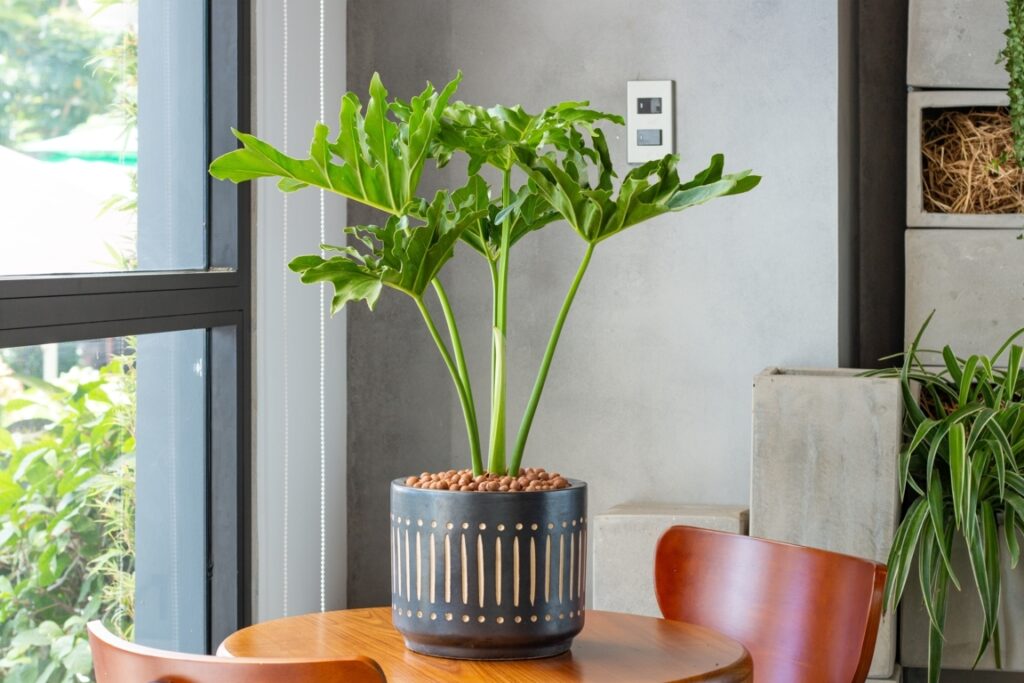When I think of Texas I picture cattle and cowboys roaming free in hot, dry sun-soaked pastures.
Sure this is an accurate image for much of the state, I’ve seen it myself.
But I’ve also visited enough other regions of the Lone Star State to know the environment and climates vary greatly within its borders. Texas landscapes are more diverse than most states.

With that diversity comes an abundance of native old-growth trees that provide plenty of essential shade. Trees contribute a wonderful service to humanity and the environment at large. They should be preserved, especially if they are old, healthy and thriving; a tree like a large live oak provides shelter and sustenance to hundreds of native species.
As I’ve discussed in a previous article, there are plenty of options for shade grass varieties to grow in Texas. But if you’re struggling to establish grass in the shade or would rather cultivate a native perennial bush to add a splash of color to your shady spots, you’ve come to the right place!
It can be a daunting task to find plants that reliably bloom in the shade, but I’m here to tell you there are more than a handful of superior selections. Why not preserve your trees and plant a delightful native flowering bush that will savor the shade? It’s the best way to get the most out of your property and encourage diversity and harmony in the landscape.
So without further ado, let’s take a look at your best options for flowering shade bushes to plant in Texas.
Turk’s Cap (Malvaviscus arboreus)

Turk’s cap is native to a wide range of regions in the North American southwest, including Texas. It is known by numerous common names depending on the location: Turk’s turban, wax mallow, manzanilla, manzanita, Scocthmans purse and ladies teardrop.
Turk’s cap grows as a shrubby understory perennial and produces its bright red blossoms best when it’s set in part shade or dappled shade. In full shade, it blooms much less frequently. But with just a touch of sunshine every day Turk’s cap blooms copiously from late spring until the fall.
The vegetative growth and flowers will die off in the winter but can be left in place as a shelter for wildlife. It can then be cut back in the spring when new growth begins to appear.
If you’re a lover of beautiful pollinators like flittering butterflies and whirring hummingbirds, Turk’s cap is a great choice for you. And as a bonus, the fruits produced from the dazzling flowers are edible for people and wildlife!
Pigeonberry (Rivina humilis)

Rivina humilis, commonly called pigeonberry, bloodberry, rouge plant and coralito is a viny evergreen perennial endemic to the southern states, Central and South America, as well as the Caribbean.
The pigeonberry plant blooms early in the spring and keeps flowering right up until the end of fall, making it an excellent all-season visual display and feed for pollinators. Native insects are always famished and searching desperately for food early in the spring. Pigeonberry will invite plenty of pollinators early in the season and convince them to stick around your property for the entire year.
The perpetual white and light pink blooms eventually turn into little red berries that will feed many native bird species. Just don’t be tempted to snack on any yourself, they’re toxic to people. The flowers and berries occur simultaneously, giving the bush an intriguing dynamic.
The low-growing shrub only gets to be 1-2 feet tall and makes an ideal groundcover perennial to grow under taller shade plants. Pigeonberry is tolerant of full shade and salty air and soils. Make sure to water the bushy vine during the heat of summer to maintain its flowers and berries.
American Beautyberry (Callicarpa americana)

An absolute “beauty” in the garden, Callicarpa americana truly is a visual treat. But its brilliant purple/pink berries aren’t its only advantageous attribute. The understory bush is native to the southwest and grows well in the shade.
Beautyberry can grow to be 4-6 feet tall with minimal care, although it will require well-draining soil and frequent watering in drought conditions.
The stunning berries appear late in the summer and cover the entire shrub in no time. The tiny, vibrant fruits will adorn your bushes well through the fall into winter and are a favorite of native birds and other critters.
Pequin Pepper (Capsicum anuum)
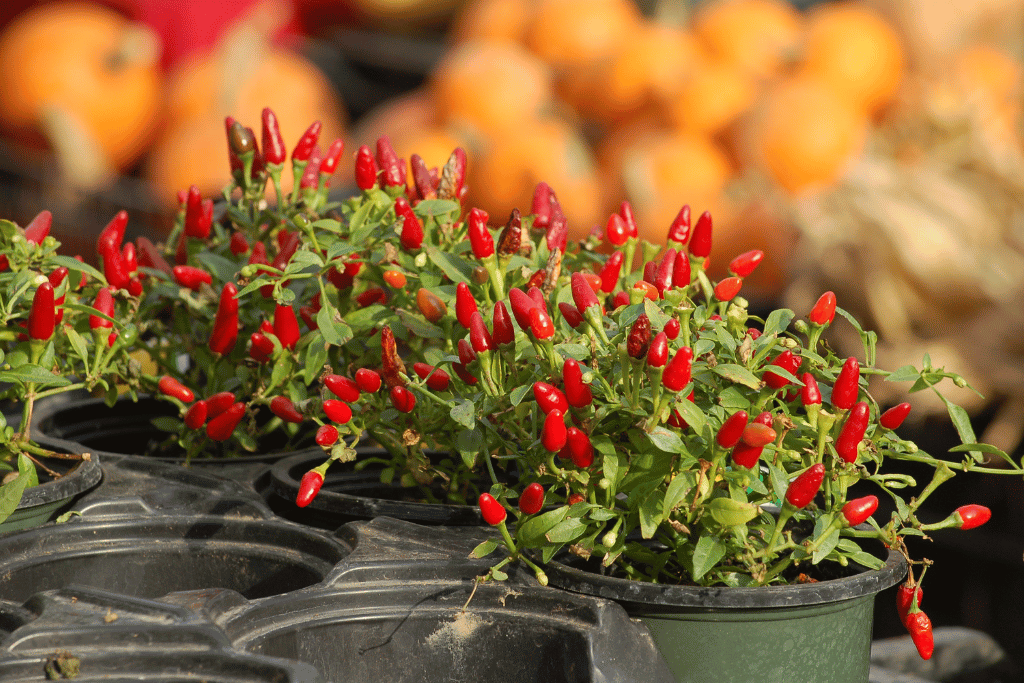
These little firecrackers are hot! 30,000-60,000 Scoville Heat Units to be exact (about 10 times spicier than a jalapeno!) Based on the fact this pepper originates in the state of Tabasco, Mexico, you get the idea of how valuable this pepper is for making hot sauce and spicy dishes.
This particular pepper plant grows in a compact, bushy manner. Stems with slender leaves produce tiny fruits that won’t get bigger than an inch long. Like jalapenos, pequin peppers start out green and gradually ripen to a bright eye-catching shade of red.
Because they’re used to hot and sunny climates, pequin pepper plants will do best in partial or light shade. Just be sure they catch the sun for a portion of the morning or afternoon so they can produce their signature berry-like hot peppers.
Pequin peppers look quite ornamental when planted together in groups. Try using them as a mini hedge in shady areas to define borders. Their tiny white flowers will provide a small source of pollen and nectar for native species. And since birds don’t have the ability to sense spice in food, they just love to pop off pequin peppers as a quick snack.
Horseherb (Calyptocarpus vialis)
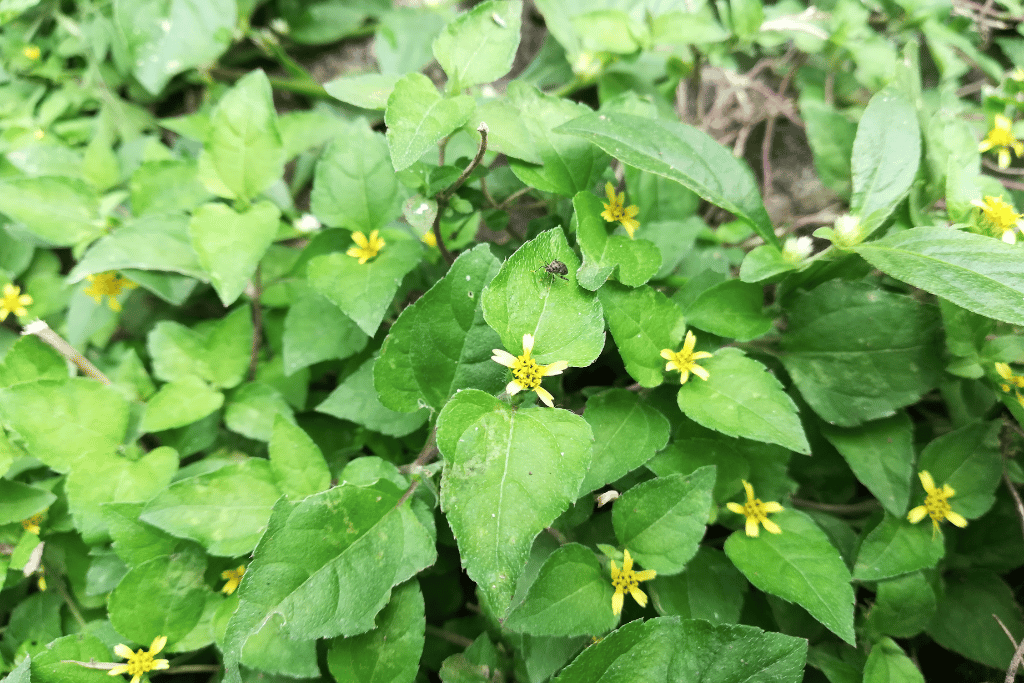
The south Texas native semi-evergreen is a relative of daisies, belonging to the family Asteraceae. Also known as lawnflower, straggler daisy and creeping Cinderella weed this groundcover crawls along low to the ground. It produces small triangle-shaped leaves that lead to cute miniature yellow flowers.
Horseherb blooms year-round, except for the winter when it goes dormant. The flowers will feed many smaller varieties of pollinators. It makes a great understory even in full-shade portions of your property. Horseherb does grow like a weed so be sure to keep an eye on it and keep its growth in check.
Frostweed (Verbesina virginica)
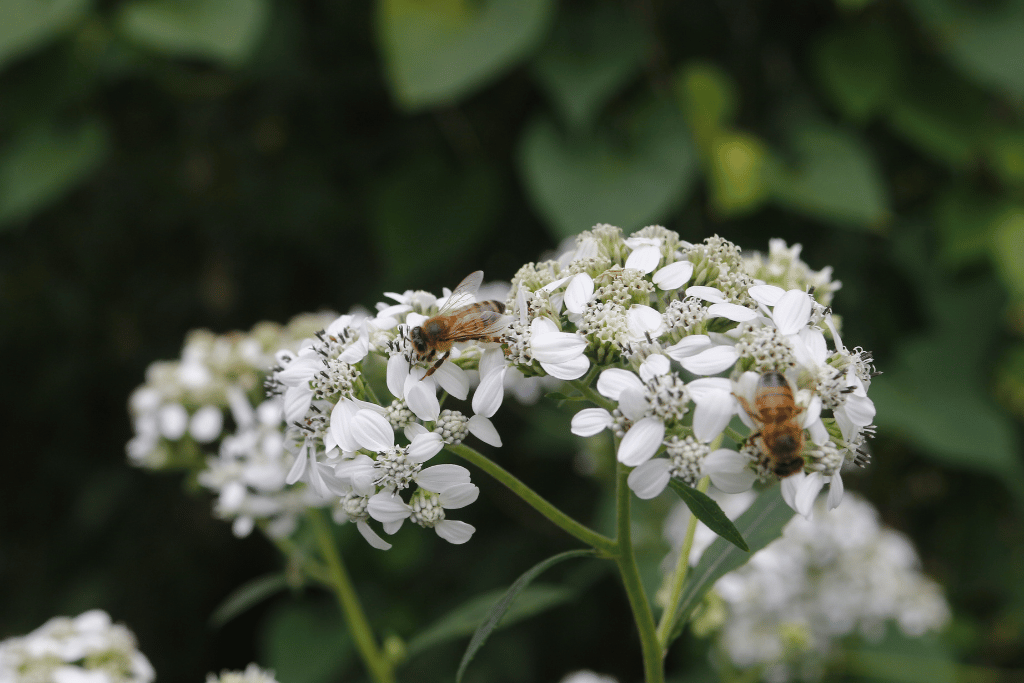
Frostweed is a rugged-looking flowering bush that you can depend on to thrive in full shade. It provides plenty of blossoms late into the fall while other flowers are fading. Frostweed is definitely a plant you should cultivate if you’re a monarch butterfly enthusiast as it produces critical late-season nectar for the migrating pollinators.
Although you’ll have to practice patience for their large clusters of flowers in August, their presence in the fall months of September, October and November is well worth the wait.
Once it finally flowers, frostweed can reach a towering height of 7 feet with broad, alternating oval-shaped leaves. Flower heads are made up of clusters of tiny white flowers giving the plant its frosty look.
Another fascinating reason for the frost reference is a unique wintertime feature of the plant. Be sure to leave the plant standing throughout the winter so it can shelter native species and put on a spectacular display of “frost flowers” when the stalk freezes, cracks and bursts open.
Shrubby Boneset (Ageratina havanensis)
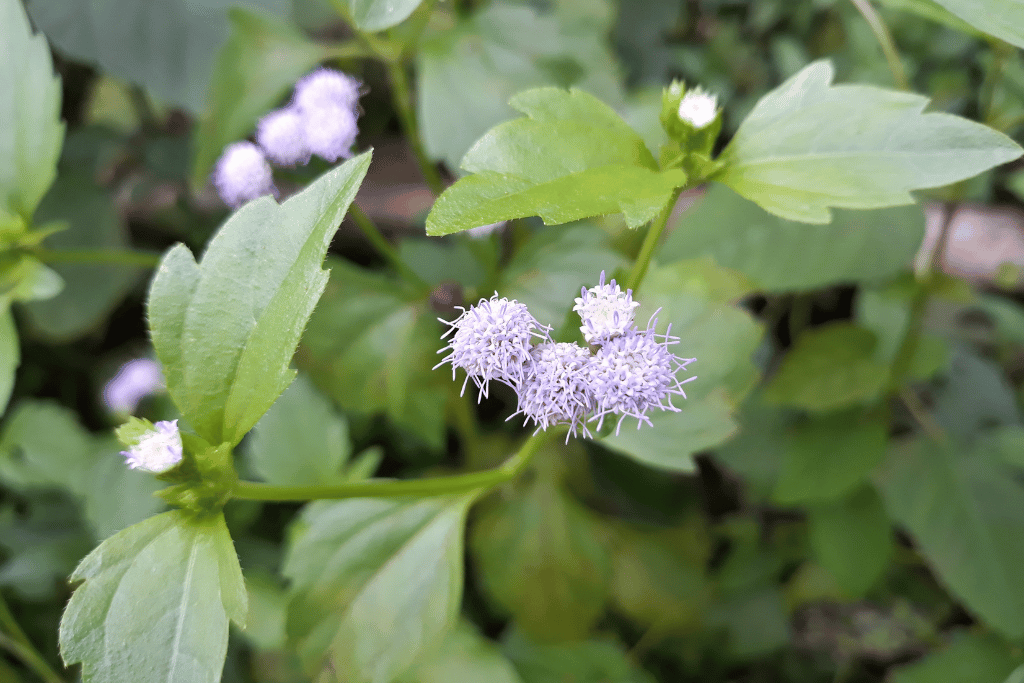
This vividly named flowering bush is a native evergreen of Texas, Mexico and Cuba. Commonly known as shrubby boneset, Havana snakeroot or white mistflower, Ageratina havanensis is another unique member of the Asteraceae family. The Greek word Ageratina means un-aging, pointing to shrubby boneset’s long-lasting flowers.
The rotund bush grows anywhere from 2- 6 feet tall and becomes loaded with fuzzy, white flowers resembling cotton balls. Shrubby boneset will grow best in partial shade and tolerates direct sun as well. The fluffy white flowers are a treat to gaze upon during the fall months. Keep your eyes peeled as they will surely attract plenty of bees, butterflies and hummingbirds with their nourishing late-season nectar.
Lyreleaf Sage (Salvia lyrata)
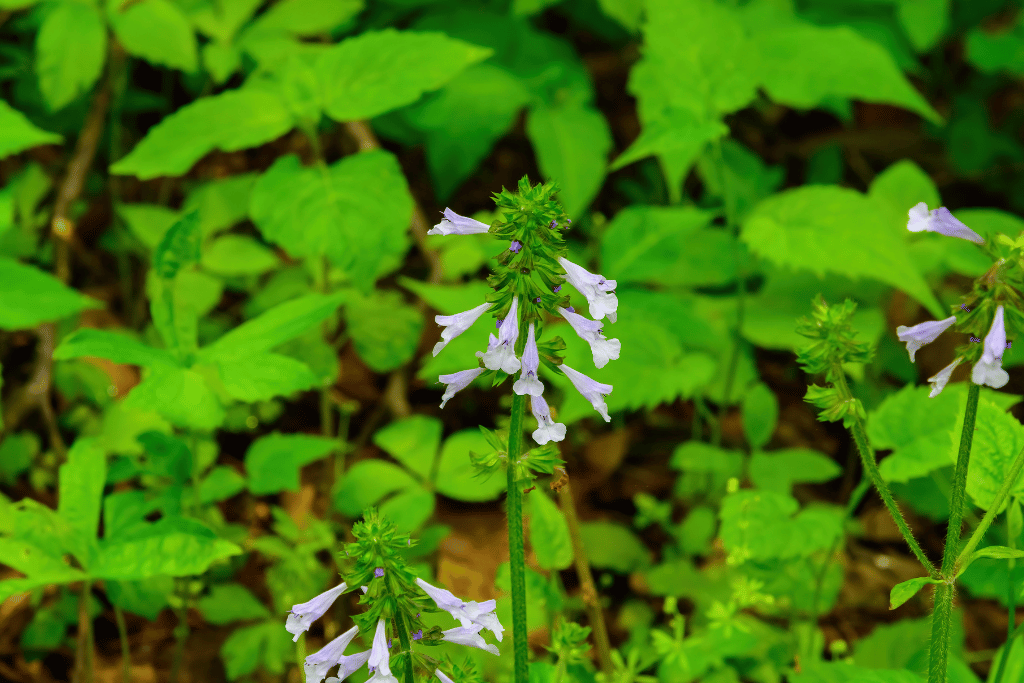
Spikes of purple springtime flowers adorn the bushy groundcover lyreleaf sage. Only reaching heights of 1-2 feet tall, it makes a perfect understory plant for shady areas. The perennial shrub is native to a large portion of the United States, from the east coast to Texas.
A basal rosette forms the foundation for the fuzzy, square stem that shoots up early in the spring. Whorls of dainty, bell-shaped flowers are produced prolifically from April to June.
You’ll be impressed by the amount bees found buzzing around the blue flowers in the springtime. Plantings of lyreleaf sage are a great way to stimulate early-season pollinator activity.
Lyreleaf sage is a popular plant to prevent erosion and suppress weeds in partially shaded areas. Some specialty varieties have been developed to grow purple leaves. The flowers do drop lots of seed at the end of the year so be vigilant that it doesn’t spread into your lawn or other undesired locations in your landscape.
The roots, stalk, foliage, flowers and seeds of lyreleaf sage were traditionally used by Native Americans in various medicinal applications.
Cedar Sage (Salvia roemeriana)
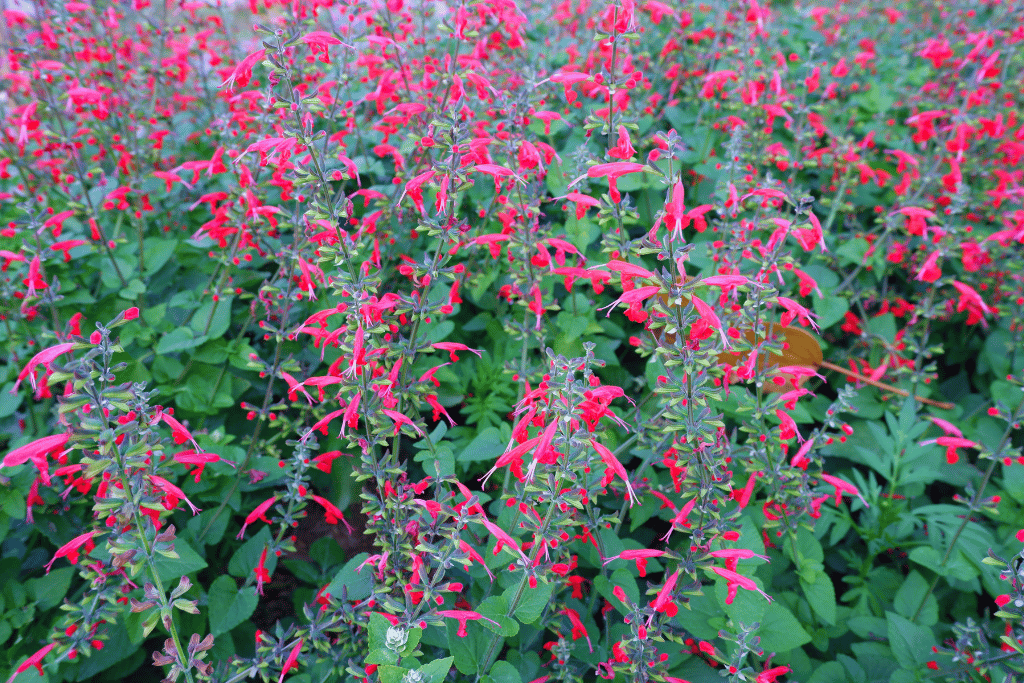
Cedar sage is an iconic native Texas perennial shrub. It grows to be a foot tall and a foot wide, a compact and neat growing habit. The common name refers to the plant’s preference for growing around cedar trees. It will also grow among oak trees or in rocky limestone-rich regions.
Vivid red flowers grow in whorls around multiple short stalks that last from spring through summer. The crimson blossoms attract numerous interesting pollinators, making a lively and diverse landscape out of your property. The light green leaves and stalk die back in the winter but will faithfully be revived year after year every spring.
Cedar sage liberally sows its seeds at the end of a season, scattering new plantings for the following year. Groupings of the plant proliferate from sown seed and they multiply quickly. It will grow well in partial shade and tidy plantings can be used for edging or as a border.
Made in the Shade
If you’ve been searching for a flowering bush that will hold up to the Texas heat but also tolerate partial to full shade, seek no further. Reference the above list and consider growing one or more of these shrubby shade dwellers. You’ll be amazed at how much character, color and native wildlife activity are just waiting to be made in the shade.



